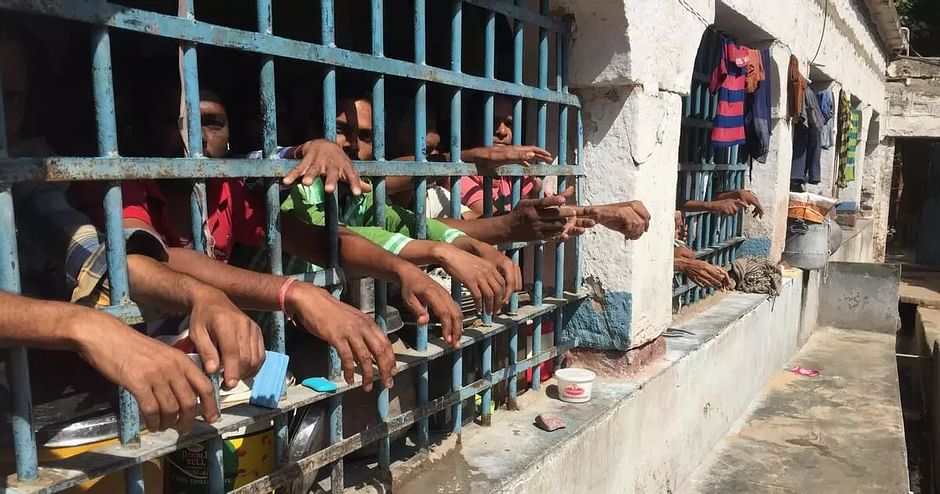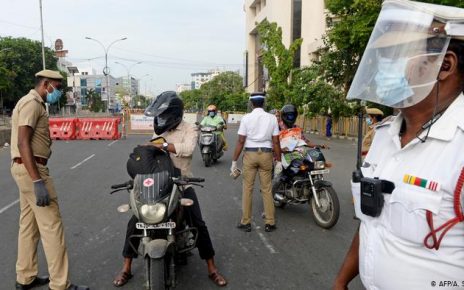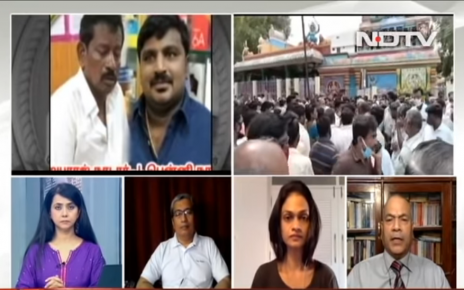Time8 News
17 September 2020
GUWAHATI: The National Campaign Against Torture (NCAT) in its report, ‘The Status Of COVID-19 In Indian Prisons’, stated that out of the 1,350 jails in India, COVID-19 infections have been reported from at least 351 jails in 25 out of total 36 States/UTs of the country as of 31 August 2020.
The maximum number of COVID-19 infections in prisons were reported from Uttar Pradesh (35 jails), followed by Madhya Pradesh (34), Maharashtra (32), Odisha (31), Andhra Pradesh (28), Rajasthan and Tamil Nadu (21 each), Assam (19), West Bengal (18), Punjab (17), Bihar (15), Delhi (14), Jharkhand (13), Karnataka (9), Haryana (8), Kerala (7), Gujarat and Chhattisgarh (6 each), Jammu & Kashmir and Uttarakhand (5 each), Telangana (3) and Andaman and Nicobar Islands, Goa, Puducherry and Tripura (1 each).
Among the COVID-19 infected prisons, 52 prisons had overcrowding from 101% to 312% as of 31.12.2018 as per the “Prison Statistics of India -2018” of the National Crime Records Bureau with Mumbai Central Jail topping the list with 312% overcrowding followed by Thiruvananthapuram Central Jail, Kerala (306%), Badaun District Jail, Uttar Pradesh (289%), Latchar District Jail, Jharkhand (268%), Muradabad District Jail, Uttar Pradesh (256%), Khandwa District Jail (252%) and Baidhan District Jail (251%) of Madhya Pradesh, Jail No.4 (239%) and Jail No. 1 (238%) of Tihar Jail Delhi and Jaunpur District Jail (237%) of Uttar Pradesh.
“The overcrowding of 18.54% in Indian prisons i.e. 4,78,600 prisoners against the actual or sanctioned capacity for 4,03,739 prisoners as reported by “Prison Statistics India-2019” is deceptive as it does not reflect the true extent of overcrowding in each of the 1350 prisons.
NCAT Coordinator Suhas Chakma said, “As per the ‘Prison Statistics India-2018’ which provides the latest information on prison-wise overcrowding, an issue not covered by the “Prison Statistics India-2019”, out of the 1,348 prisons in India as on 31.12.2018, about 538 prisons or 40% of the total jails were found to be overcrowded ranging from 1 to 636 % over and above their officially sanctioned capacities. Out of these 538 overcrowded prisons, 34 prisons were found to have overcrowding ranging from 201% to 636% while about 100 prisons had overcrowding varying from 100% to 200% and 404 prisons had overcrowding ranging from 1% – 99%.”
Irinjalakkuda Special Jail in Kerala with 636% overcrowding topped the list of ten worse overcrowded prisons in India followed by Palakkad Special Jail (513%) of Kerala, Lalitpur District Jail (355%) of Uttar Pradesh; Maihar Sub-Jail (343%) and Tarana Sub-Jail (315%) of Madhya Pradesh; Mumbai Central Jail (312%) of Maharashtra; Thiruvananthapuram Central Jail (306%) of Kerala; Badaun District Jail (289%) of Uttar Pradesh; Dindori District Jail (270%) of Madhya Pradesh; Latchar District Jail (268%) and Gumla District Jail (264%) of Jharkhand, among other jails.
As Indian prisons are overcrowded, the potential of spreading COVID-19 in case of any prisoner getting infected with the COVID-19 virus is extremely high, on 13 March 2020 the Supreme Court of India intervened through Re: Contagion of COVID 19 Virus in Prison [Suo Motu Writ Petition (Civil) No.1/2020] and issued a number of directions for decongestion of prisons by releasing prisoners.
“The overall reduction of 15.4% in overall occupancy is not adequate to address overcrowding of 40% of the Indian prisons including 134 prisons having overcrowding from 100% to 636% and the rights of the prisoners not to be subjected to inhuman and degrading treatment and the right to be treated with humanity and with respect for the inherent dignity of the human person is recognised under India’s constitutional jurisprudence and Article 10(1) of the International Covenant on Civil and Political Rights which is applicable in India as per Sections 2(1)(d) and 2(1)(f) of the Protection of Human Rights Act, 1993.” Chakma further said.



